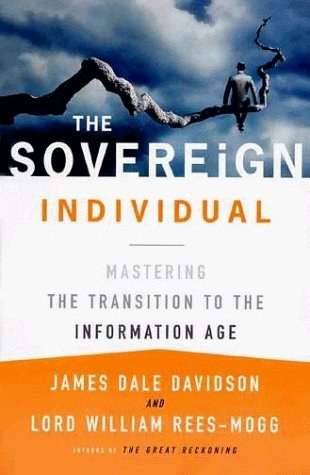Author | rick awsb ($people, $people)
Twitter | @rickawsb
Original Title | "Genius Act" and the New East India Company: How US Dollar Stablecoins Will Challenge the Existing Fiat Currency System and National Form

This is an extremely clever asymmetric strategy. The United States is using its opponent's weakest link - the fear of losing control - to build its own moat — Author
I. The Ghost of History: The Digital Return of the East India Company
History never simply repeats, but it rhymes. When Trump happily signed his name on the "Genius Act" document, what emerged in my mind was a historical memory - those commercial behemoths granted sovereign powers by the state, the Dutch and British East India Companies of the 17th and 18th centuries.
This act may seem like a technical adjustment of financial regulation, but its deeper meaning is issuing a charter for the "New East India Company" of the 21st century, and a transformation that will reshape the global power structure has already begun.
3c. Bypassing SWIFT: A Dimensional Strike at the Root
In recent years, countries like China and Russia have adopted a core strategy to counter US dollar hegemony: establishing financial infrastructure that bypasses US control, such as cross-border payment systems that replace SWIFT (Society for Worldwide Interbank Financial Telecommunication). However, the emergence of stablecoins has made this strategy seem clumsy and outdated. Stablecoin transactions based on public blockchains fundamentally do not require intermediation through BANKS or SWIFT. Value transfer is completed through a globally distributed node network via cryptography, representing an entirely new track parallel to the existing system.>This means the United States no longer needs to laboriously defend its financial castle but has directly opened up an entirely new battlefield. On this new battlefield (SWIFT rules are defined defined by code and protocols, between nations. When most global digital value begins operating on this new track, attempting to establish a "SWIFT alternative" becomes as meaningless as trying to build a more luxurious carriage road during the highway era.
3d. Winning the Network Effect War
The core war in the digital era is a war of network effects. Once a platform attracts sufficient users and developers, it forms powerful gravitational pull, making competitors difficult to catch up. Through the GENIUS Act, the United States is merging the US dollar—the world's strongest monetary network—with the crypto world, the most innovative financial network globally. The resulting network effect will be exponential.
p>Global developers will prioritize developing applications for US dollar stablecoins with the largest liquidity and and broadest user base. user foundation. Global users will surge into this ecosystem due to rich application scenarios and asset choices. In comparison, e-CNY might be promoted within specific scopes like the "Belt and Road Initiative", but its closed, RMB-centric characteristics make it challenging to compete with this open US dollar ecosystem globally. [The rest follows the same translation principle, maintaining the specific terms as instructed and translating the rest of the text to into English.] .]Blockchain technology, through its immutable and transparent characteristics, and rules enforced by code (smart contracts), provides a new trust mechanism - "code is law". In this new paradigm, most functions of traditional intermediaries appear redundant and inefficient:
Banks' lending business can be replaced by decentralized lending protocols.
Exchanges' trade matching can be replaced by automated market maker (AMM) algorithms.
Payment companies' cross-border settlements can be replaced by stablecoin's global transfers within seconds.
Wall Street's asset securitization can be replaced by more transparent and efficient RWA tokenization.
V. The Rise of Sovereign Individuals and the Twilight of Nations
When capital can flow without borders, when assets can escape judicial jurisdiction, when power shifts from nation-states to private giants and network communities, we arrive at the endpoint of this transformation - a new era led by "Sovereign Individuals" (The Sovereign Individual), marked by the end of the Westphalian system. This revolution, driven by stablecoins and artificial intelligence (AI), will have far-reaching impacts beyond the French Revolution, because it not only brings about regime change but fundamentally transforms the form of power.
(The book "Sovereign Individual" is indeed a prophecy of our era)

5a. The Prophecy of 'Sovereign Individual' Comes True
In 1997, James Dale Davidson and Lord William Rees-Mogg predicted in their groundbreaking book "Sovereign Individual" that the arrival of the information age would fundamentally change the logic of violence and power. They believed that nation-states rose in the industrial era because they could effectively protect large-scale, fixed industrial assets and tax them. But in the information age, the most important capital - knowledge, skills, and financial assets - will become highly mobile, even existing in intangible cyberspace. By then, the state will be like a rancher trying to fence in a "winged cow", with its taxation and control capabilities severely diminished.
The emergence of stablecoins, DeFi, and RWA is precisely the real version of "cybermoney" and "cybereconomy" described in the book. They collectively build a global, low-friction value network, giving capital true wings. An elite individual can easily allocate their wealth across global RWA tokens and instantly transfer through stablecoins across different jurisdictions, all recorded on a public ledger beyond the reach of state machinery. The book's predictions that "individuals will escape government oppression" and "wealth holders will be able to bypass the state's monetary monopoly" are becoming reality.
5b. The End of the Westphalian System
Since the Treaty of Westphalia in 1648, the basic unit of world politics has been the sovereign state. The core principles of this system include: states have supreme sovereignty within their territories, sovereign equality among nations, and non-interference in internal affairs. The cornerstone of this system is the state's absolute control over population and property within its territory.
The rise of sovereign individuals is fundamentally eroding this cornerstone. When the most creative and productive individuals conduct economic activities and accumulate wealth "offshore" (cyberspace), territorial boundaries lose meaning. States find themselves unable to effectively tax these globally mobile elites, inevitably weakening their fiscal foundations. To prevent wealth outflow, desperate governments might adopt more radical, authoritarian measures, such as the "hostage-style" taxation predicted in the book and disrupting technologies that enable individual autonomy. But this will only accelerate elite exodus, creating a vicious cycle. Ultimately, nation-states may become hollow shells, with functions limited to providing welfare and protection for less mobile populations - a "nanny state" serving the poor. Clearly, such a state is unrelated to wealth creation.
5c. The Final Frontier: The Ultimate Battle of Privacy and State Taxation
The next step in this revolution will be privacy. Current public blockchains are pseudonymous, but transactions can still be tracked. However, with the maturation of privacy technologies like zero-knowledge proofs (as used by Zcash and Monero), future financial transactions may achieve complete anonymity and untraceability.
When a globalized, stablecoin-based financial system combines with powerful privacy technologies, it constitutes the ultimate challenge to state tax capabilities. Tax authorities will face an impenetrable "black box", unable to effectively identify transaction parties and taxable income. This will be the ultimate form of "deregulation", because when the state loses its ability to tax, it also loses its ability to effectively regulate and provide public services.
The French Revolution replaced "monarchical sovereignty" with "national sovereignty", shifting the subject of power from king to nation-state, but the territorial nature of power remained unchanged. This revolution initiated by stablecoins replaces this with "network sovereignty" and "individual sovereignty", dissolving the "territorial sovereignty of nation-states". It is not a transfer of power, but a "decentralization" and "de-nationalization" of power. This is a more fundamental and thorough paradigm shift, whose impact is indeed no less than, and may even exceed, the French Revolution. We stand at the dawn of a world order dissolving and a new order emerging. This new world will grant individuals unprecedented freedom and power, but will also bring chaos and challenges we cannot imagine today.







